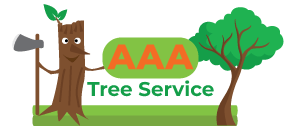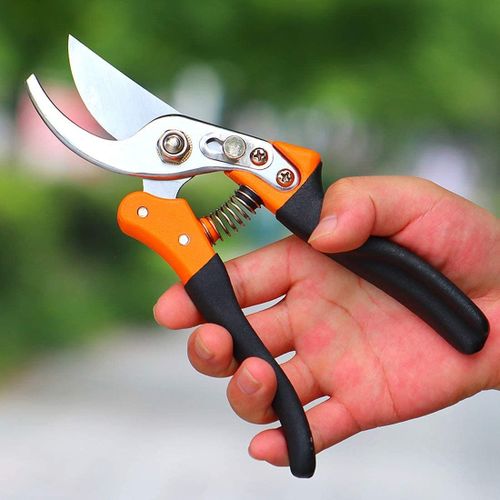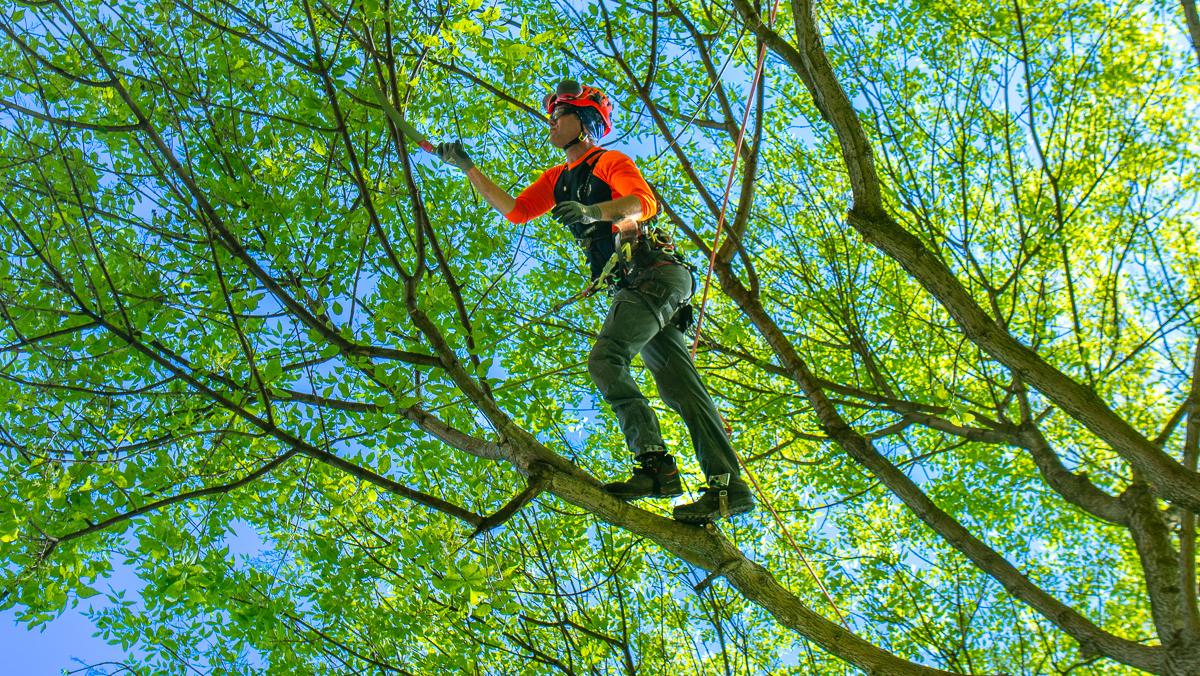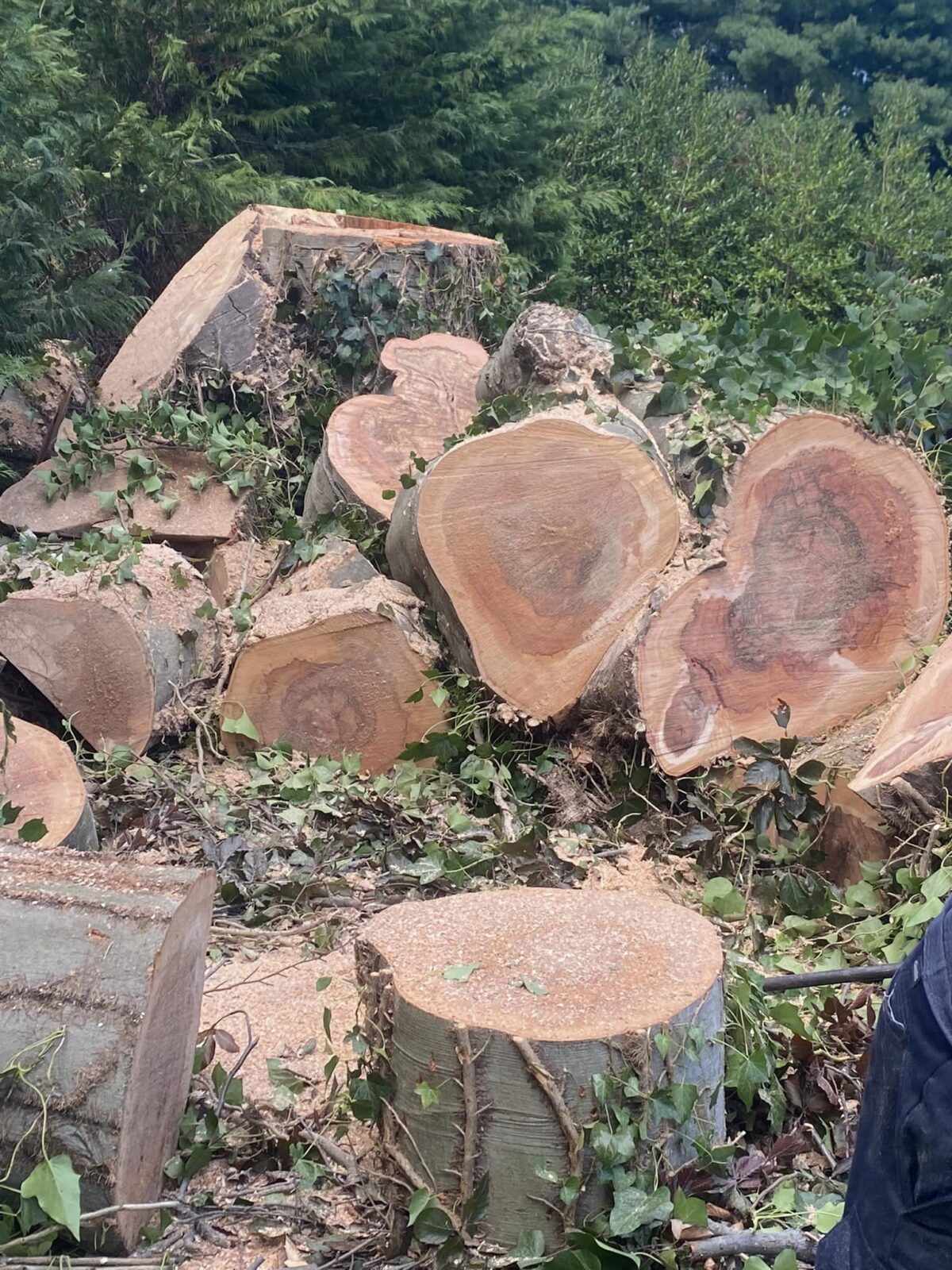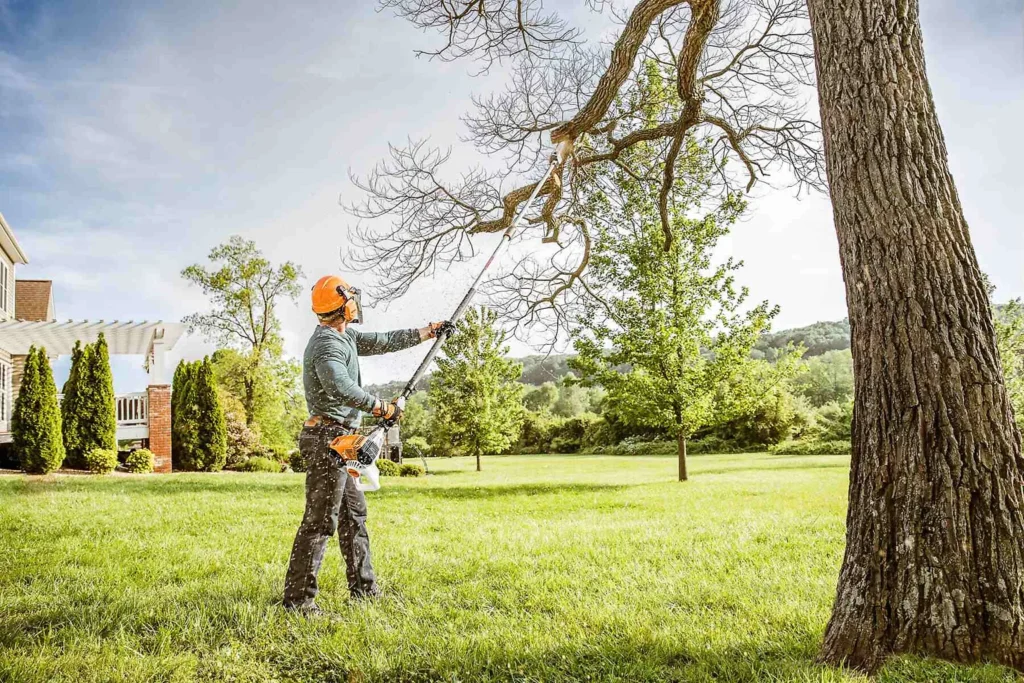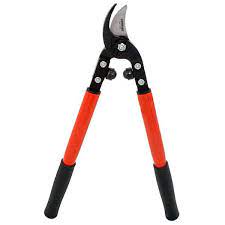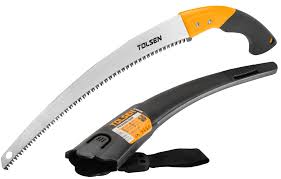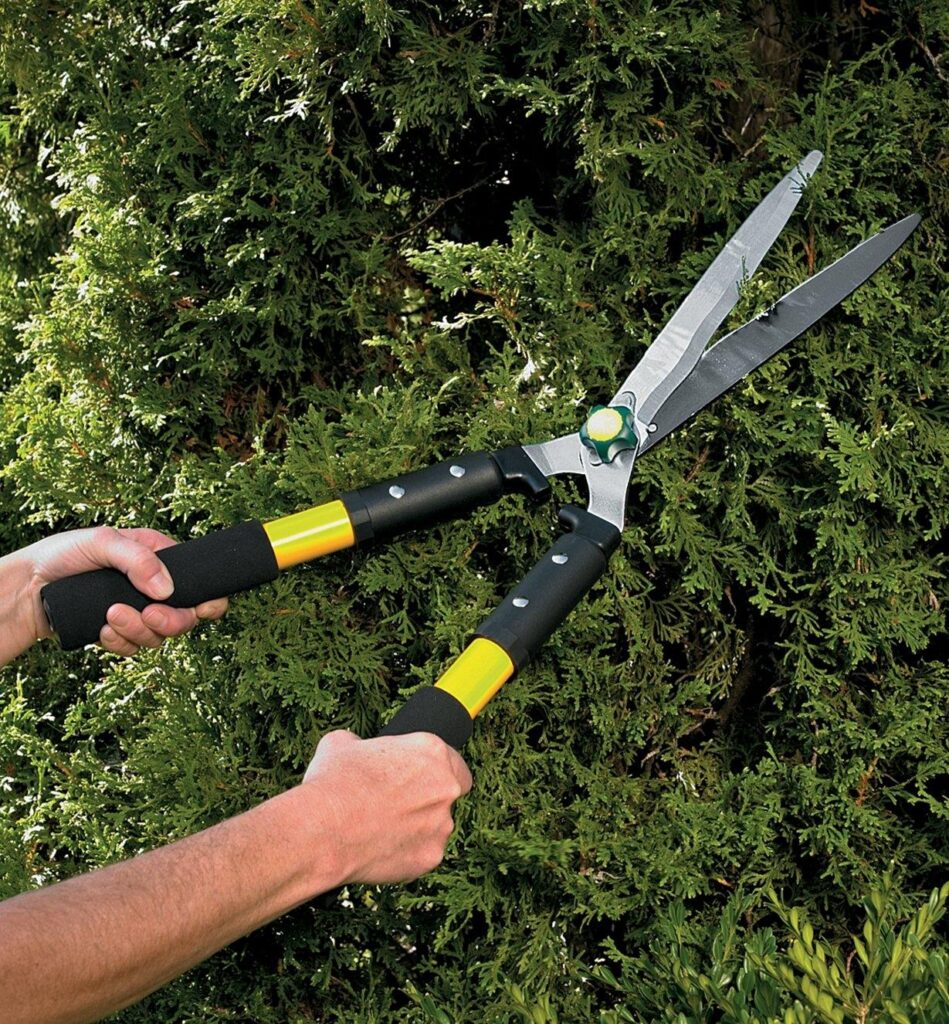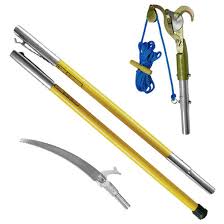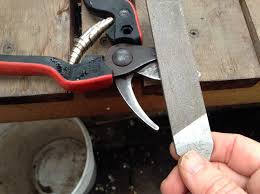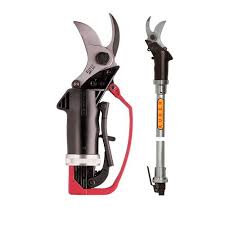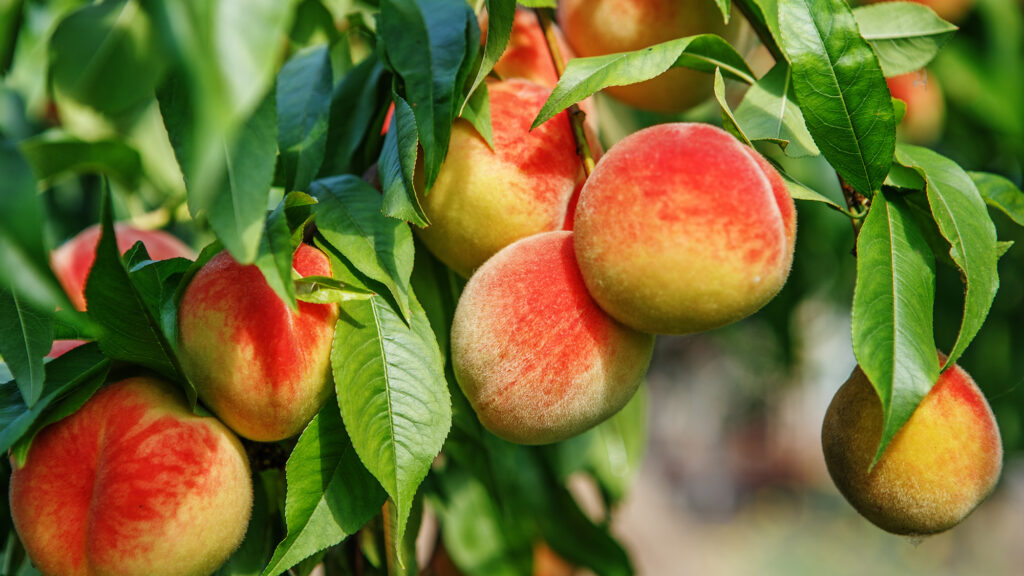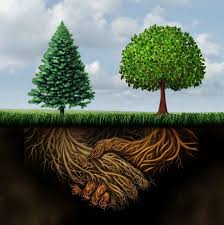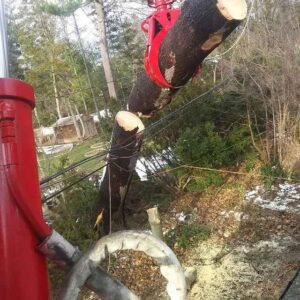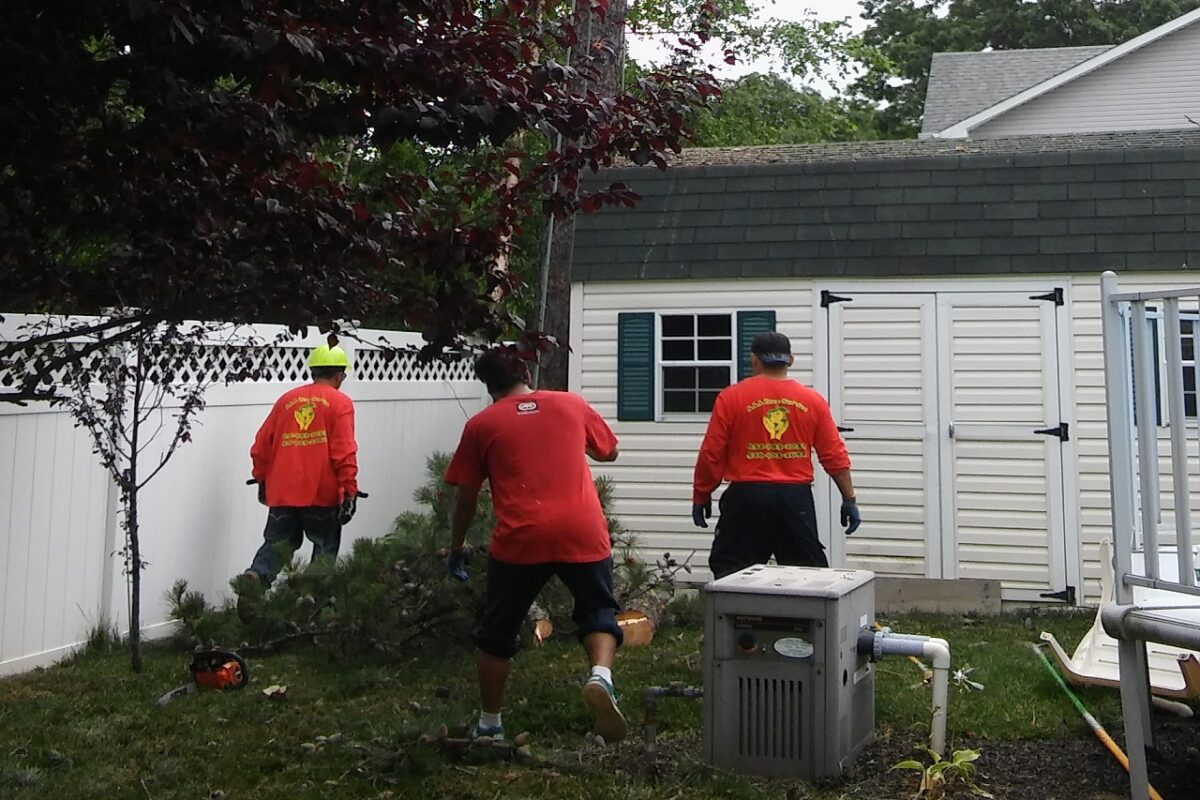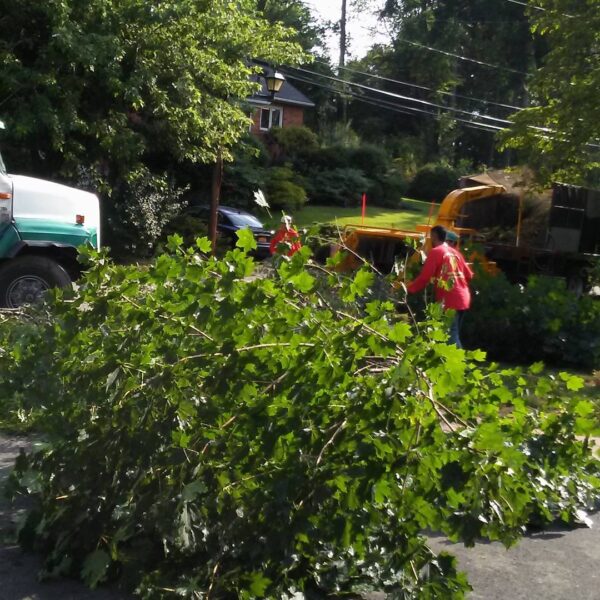Tree Trimming
Welcome to the world of tree trimming, a vital practice that not only shapes the natural skyline
but also ensures the health and longevity of our leafy companions. Imagine walking through a
neighborhood where each tree stands tall, branches reaching out like open arms, creating a serene
and inviting atmosphere. This is the art of tree trimming at work.
In this article, we’ll look at the delicate balance of nature and nurture. Tree trimming, often
mistaken for a mere gardener’s chore, is a craft that balances aesthetic appeal with the biological
needs of trees. It’s a proactive step towards safeguarding our green giants from the silent threats
that lurk in unchecked growth.
As we go into the reasons behind tree trimming, we’ll uncover the many benefits it offers. From
the joy of seeing a well-manicured garden to the relief of securing our homes from potential
hazards, tree trimming touches our lives in more ways than one. It’s not just about cutting away
the excess; it’s about fostering a healthy environment where both trees and people can thrive.
The Importance of Tree Trimming
Tree trimming is not just a task, it’s an essential part of tree care that ensures our leafy friends
lead healthy, long lives while contributing positively to our environment. Let’s look at the
reasons why tree trimming is so important.
Aesthetic Appeal: Trees are nature’s masterpieces, and trimming is the brushstroke that
enhances their beauty. By removing overgrown branches, we help trees maintain a pleasing
shape and size, which complements the overall landscape. A well-trimmed tree is a visual
delight, adding charm and character to gardens and streets alike.
Safety Measures: Overgrown trees
can pose significant risks. Weak limbs may fall, causing
injury or damaging property. Trimming helps prevent such accidents by removing potentially
dangerous branches. It also ensures clear visibility for drivers and pedestrians, especially around
corners and near traffic signals.
Tree Health: Just like humans, trees can become ill and suffer from overgrowth. Trimming
removes dead or diseased branches, preventing the spread of decay and pests. It also allows for
better air circulation and sunlight penetration, which are vital for a tree’s growth and fruit
production.
Ecosystem Balance: Trees
play a pivotal role in the ecosystem. They produce oxygen, improve
air quality, and serve as habitats for wildlife. Trimming ensures trees can fulfill these roles
effectively. It helps maintain the balance of the ecosystem by keeping trees in optimal health to
support other life forms.
Urban Environment: In urban areas, trees face unique challenges due to limited space and
resources. Trimming becomes even more important to manage tree growth and ensure they
coexist harmoniously with urban infrastructure. It helps prevent trees from interfering with
power lines, buildings, and other structures.
Cultural Significance: Trees often hold cultural or historical importance. Trimming maintains
their health and beauty, allowing them to continue being symbols of heritage and community
pride. They become living landmarks that tell stories of the past and inspire future generations.
When to Trim Your Trees
Timing matters a lot when it comes to tree trimming. It’s not just about what you trim, but also
when you do it. The right timing can ensure the best outcomes for both the tree’s health and its
appearance. Let’s look at the best ways to determine when to trim your trees.
Seasonal Timing:
Most trees benefit from being trimmed during their dormant season, which is typically in late fall
or winter. During this time, trees are less susceptible to harm from pruning and are better able to
recover before the new growth of spring. However, there are exceptions based on species and
climate, so it’s important to understand the specific needs of your trees.
Tree Species Considerations:
Deciduous Trees: Best trimmed in late fall or winter when they’ve shed their leaves and
their structure is visible.
Evergreen Trees: Can be trimmed any time of year, but it’s best to avoid heavy pruning
in late summer or early fall.
Flowering Trees: For trees that bloom in spring, trim them after their blooming cycle.
For those that flower in mid to late summer, trim them in late winter or early spring.
Growth and Health Indicators:
Observing your trees can provide clues about when to trim:
Overgrowth: When branches start to look unruly or extend beyond desired boundaries.
Dead or Damaged Limbs: Should be removed as soon as they’re noticed to prevent
decay and pests.
Disease: If signs of disease are present, consult a professional for the best course of
action. OF TREE CARE NEWS IN THIS WEBSITE
Environmental Factors:
Consider the environment around your trees:
Urban Areas: May require more frequent trimming due to space constraints and safety
concerns.
Rural Settings: Might allow for more natural growth, with trimming focused on health
and aesthetics.
Special Circumstances:
Sometimes, immediate trimming may be necessary:
After a Storm: Check for and promptly remove any damaged branches.
Pest Infestation: If pests are damaging your tree, timely trimming may help control the
problem.
Professional Advice:
When in doubt, seek the guidance of a certified arborist who can provide tailored advice for your
trees and region.
In essence, knowing when to trim your trees is a blend of art and science. It requires an
understanding of the rhythms of nature, the specific needs of each tree species, and the ability to
respond to the unique challenges presented by the environment.
Tree Trimming Techniques
Mastering the art of tree trimming involves understanding the various techniques that can be
applied to maintain the health and beauty of trees. Each method serves a specific purpose and
must be executed with precision and care. Here’s a detailed look at the key techniques used in
tree trimming.
Cleaning: This technique involves the removal of dead, diseased, or weak limbs from the crown
of the tree. Cleaning helps prevent the spread of disease and pests, and it also reduces the weight
of heavy limbs, promoting a healthier tree structure.
Thinning: Thinning involves selectively removing branches to promote light penetration and air
movement in the crown. This technique reduces the density of the tree, which can help enhance
fruit production and reduce wind resistance, lowering the risk of storm damage.
Raising: Raising involves removing the lower branches from a tree to provide clearance for
buildings, vehicles, pedestrians, and vistas. It’s important to do this gradually over several years
to avoid stressing the tree.
Reduction: Reduction reduces the size of a tree, often for utility line clearance. Careful
consideration must be taken to maintain the tree’s structural integrity and form.
Topping: Topping is a drastic and generally harmful method that involves cutting tree branches
to stubs or lateral branches not large enough to assume the terminal role. This technique is not
recommended as it can severely damage the tree’s health and is only used in specific situations
where no other options are available.
Pollarding: Pollarding is a pruning technique that involves removing a tree’s upper branches to
encourage a dense head of branches and foliage. It is a technique that must be started when a
tree is young and continued on a regular cycle.
Espalier: Espalier is the practice of controlling tree growth through pruning and tying branches
so that they form a flat plane, often against a wall or trellis. This is commonly used for fruit trees
to maximize space and increase sun exposure to the fruits.
Vista Pruning: Vista pruning creates visual
access to lakes, valleys, or other picturesque views
while maintaining privacy and ensuring the health of the tree.
Crown Restoration: Crown restoration is used for trees that have been severely pruned,
vandalized, or damaged. It is a gradual process to help the tree regain its natural shape and form.
Structural Pruning: Structural pruning is done to improve the tree’s branch architecture and
structural integrity, often important for young trees to develop a strong framework.
Root Pruning: Root pruning is the cutting of roots, usually to prevent damage to foundations or
paved surfaces. It must be done carefully to avoid destabilizing the tree or causing health
problems.
Fruit Tree Pruning: Specific to fruit-bearing trees,
this technique is used to shape the tree and
manage fruit production. It involves thinning out branches to ensure that sunlight reaches the
fruits and that there’s enough room for them to grow.
Hedge Trimming: For trees and shrubs grown as hedges, trimming is done to maintain a
specific shape and dense foliage.
Pruning Young Trees: Young trees require careful pruning to establish a strong structure and
desirable form as they grow.
Pruning Mature Trees: Mature trees are pruned for health, safety, and aesthetics, but the
approach is more conservative to avoid causing stress or damage.
Tree Trimming Safety
Ensuring safety during tree trimming is paramount. It’s not just about protecting the person
doing the trimming, but also safeguarding the tree and the environment around it. Here’s a
detailed guide to staying safe while performing this crucial task.
Personal Protective Equipment (PPE):
Head Protection: Helmets guard against falling branches and debris.
Eye Protection: Safety glasses or goggles shield eyes from sawdust and wood chips.
Hearing Protection: Earplugs or earmuffs are essential when using loud equipment.
Hand Protection: Gloves provide a better grip and protect against cuts.
Foot Protection: Sturdy boots with slip-resistant soles prevent falls.
Tool Safety:
Inspection: Regularly check tools for damage and wear.
Maintenance: Keep tools sharp and clean for efficient and safe use.
Operation: Use each tool according to the manufacturer’s instructions.
Handling: Carry tools properly to avoid accidents.
Risk Assessment:
Tree Health: Assess the tree for stability and signs of disease.
Surroundings: Check for power lines, structures, and people in the vicinity.
Weather Conditions: Avoid trimming during adverse weather, such as high winds or
lightning.
Safe Trimming Practices:
Ladder Safety: Make sure the ladders are firm and safe.
Working at Heights: Use harnesses and ropes when working above ground.
Branch Removal: Use the three-cut method to prevent bark tearing.
Drop Zone: Establish and mark a safe area where branches can fall without causing
damage.
Emergency Preparedness:
First Aid: Have a first aid kit readily available.
Escape Plan: Know how to quickly and safely exit the work area if needed.
Communication: Ensure someone knows where you are and what you’re doing.
Professional Help:
Complex Tasks: For large or hazardous trees, always hire a professional arborist.
Training: Consider professional training if you plan to do extensive trimming.
Environmental Considerations:
Wildlife: Check for nests or animals before starting.
Debris Disposal: Dispose of trimmings responsibly to avoid environmental harm.
Legal Requirements:
Permits: Some regions require permits for tree trimming, especially for protected
species.
Regulations: Familiarize yourself with local regulations regarding tree trimming.
These safety precautions will help you make sure that tree trimming is done safely and
responsibly. Remember, the goal is to maintain the health and beauty of the trees while
preventing harm to yourself and others. Safety is not just a protocol, it’s a commitment to doing
things the right way, every time.
Understanding Tree Anatomy and Response to Trimming
To trim a tree effectively, it’s essential to understand its anatomy and how it responds to
trimming. This knowledge ensures that we can care for trees in a way that promotes their health
and longevity. Let’s go into the world of tree biology and the effects of our pruning shears.
Tree Anatomy Basics:
Roots: The foundation of a tree, absorbing water and nutrients from the soil.
Trunk: The main support of the tree, housing the vascular system that transports sap.
Branches: Extensions of the trunk, providing structure for leaves and fruits.
Leaves: The food factories of the tree, where photosynthesis occurs.
The Vascular System:
Xylem: Tubes that carry water and minerals up from the roots to the rest of the tree.
Phloem: Channels that transport sugars and other metabolic products downward.
Trimming and Tree Health:
Wound Response: Trees don’t “heal” like humans; they compartmentalize wounds,
isolating damaged areas to prevent decay.
Callus Formation: Over time, a properly made cut will stimulate the growth of callus
tissue, which covers the wound.
Growth Patterns: Trimming can redirect growth by encouraging the tree to develop
more branches and leaves in certain directions.
Trimming Impact on Tree Structure:
Structural Integrity: Proper trimming maintains a tree’s balance and prevents weak
spots.
Stress Reduction: Removing excess weight from branches reduces the risk of breakage.
Energy Allocation: By trimming away unnecessary branches, a tree can focus its energy
on growing stronger and healthier.
The Role of Hormones:
Auxins: Hormones that promote cell elongation, inhibited by trimming, which can
control the direction of growth.
Cytokinin’s: Hormones that encourage cell division and growth, which can be stimulated
by strategic trimming.
Avoiding Over-Trimming:
Shock Prevention: Over-trimming can shock a tree, leading to stunted growth or even
death.
Disease Vulnerability: Large cuts or too many cuts can make a tree more susceptible to
diseases and pests.
Special Considerations for Different Species:
Conifers: May require different trimming techniques compared to deciduous trees.
Fruit Trees: Pruning affects not just the tree’s shape but also the quantity and quality of
the fruit.
Trimming and the Environment:
Microhabitats: Trimming can impact the creatures that live in and around the tree.
Climate Adaptation: Trees in different climates may respond differently to trimming.
Understanding tree anatomy and how trees respond to trimming is crucial for anyone looking to
maintain these magnificent organisms. By respecting the tree’s natural processes and responding
with appropriate trimming techniques, we can ensure that our trees remain healthy, strong, and
beautiful for many years to come.
The Role of a Professional Arborist
When it comes to the care and maintenance of trees, the expertise of a professional arborist is
invaluable. Arborists are the guardians of trees, equipped with the knowledge and tools to ensure
that each tree can thrive in its environment. Let’s explore the diverse roles of these tree care
specialists.
Expertise and Certification:
Certified Arborists: These professionals have undergone rigorous training and
certification through recognized organizations, such as the International Society of
Arboriculture (ISA).
Continued Education: Arborists stay updated on the latest practices and research in
arboriculture to provide the best care possible.
Comprehensive Tree Care:
Health Assessments: Arborists conduct detailed evaluations to diagnose diseases, pest
infestations, and structural issues.
Personalized Care Plans: They develop tailored care plans to address the specific needs
of each tree, considering species, location, and environmental factors.
Advanced Trimming Techniques:
Precision Pruning: Arborists use precise trimming techniques to enhance a tree’s health
and appearance without causing unnecessary stress or damage.
Specialized Equipment: They utilize specialized tools that allow for safe and effective
trimming, even in challenging situations.
Tree Preservation:
Conservation: Arborists advocate for the preservation of trees, especially those with
historical, cultural, or ecological significance. Sustainable Practices: They employ sustainable methods to minimize the impact on the
environment while caring for trees.
Risk Management:
Safety Assessments: Professional arborists assess potential risks posed by trees to people
and property and take appropriate actions to mitigate them.
Emergency Response: In the event of storms or other emergencies, arborists are trained
to handle dangerous situations involving damaged trees.
Legal and Ethical Responsibilities:
Permits and Regulations: Arborists are knowledgeable about local tree preservation
laws and obtain necessary permits for tree work.
Ethical Standards: They adhere to a code of ethics that emphasizes honesty, integrity,
and respect for nature.
Public Education and Advocacy:
Community Engagement: Arborists often engage with the community to educate the
public about the importance of trees and proper tree care.
Policy Influence: They may work with policymakers to develop regulations that promote
the health and safety of trees in urban and rural settings.
Collaboration with Other Professionals:
Teamwork: Arborists often collaborate with landscapers, city planners, and
environmentalists to create cohesive green spaces.
Consultation: They provide expert advice for construction projects to protect trees
during development.
In essence, the role of a professional arborist is crucial for the well-being of our trees and, by
extension, our environment. They are not just tree trimmers, they are skilled professionals
dedicated to the art and science of tree care.
Legal and Ethical Considerations
Tree trimming, while often seen as a routine maintenance task, is surrounded by a web of legal
and ethical considerations. These guidelines ensure that tree trimming is done responsibly and
with respect for the law, the environment, and the community. Let’s delve into the details that
govern the world of tree care.
Understanding Local Laws:
Permits: Many localities require permits for tree trimming, especially for significant
pruning or removal of large trees.
Protected Trees: Some trees may be protected due to their age, species, or historical
significance, and cannot be trimmed without authorization.
Boundary Laws: There are specific regulations regarding trimming trees that cross
property lines or affect neighbors.
Ethical Tree Care:
Respect for Nature: Ethical tree trimming involves making decisions that are in the best
interest of the tree’s health and the surrounding ecosystem.
Wildlife Protection: Care must be taken to avoid disturbing wildlife habitats and to
protect the biodiversity that trees support.
Sustainable Practices: Employing methods that minimize waste and promote the long-
term well-being of trees.
C. Professional Conduct:
Certification: Arborists should be certified and follow the standards set by professional
bodies like the International Society of Arboriculture (ISA).
Honesty: Providing accurate assessments of a tree’s condition and not recommending
unnecessary work.
Transparency: Clearly communicating with clients about the work to be done and any
potential risks involved.
Community Considerations:
Public Safety: Ensuring that tree trimming activities do not pose a hazard to the public.
Aesthetic Impact: Considering the visual impact of trimming on the community and
striving to maintain the natural beauty of the area.
Noise and Disruption: Minimizing the noise and disruption caused by trimming
activities, especially in residential areas.
E. Environmental Responsibility:
Conservation: Avoiding excessive trimming and preserving as much of the tree as
possible.
Ecosystem Services: Recognizing the role of trees in providing clean air, water
regulation, and other ecosystem services.
Climate Change: Understanding the impact of trees on carbon sequestration and climate
regulation.
Legal Recourse:
Disputes: Handling any disputes over tree trimming through legal channels and striving
for amicable resolutions.
Liability: Being aware of the liability issues that can arise from improper trimming,
including damage to property and personal injury.
Cultural Sensitivity:
Heritage Trees: Acknowledging the cultural significance of certain trees and ensuring
that trimming does not erase history.
Community Engagement: Involving the community in decisions about tree trimming,
especially when it affects public spaces.
Future Considerations:
Long-Term Planning: Making trimming decisions with an eye towards the future health
and growth of the tree.
Education: Informing clients and the community about the importance of proper tree
care and the reasons behind trimming practices.
Advanced Tree Trimming Techniques
As we venture deeper into the realm of tree care, we encounter advanced trimming techniques
that require a deft touch and a deep understanding of tree biology. These methods are often
reserved for specific circumstances that call for more than just basic maintenance. Let’s explore
these sophisticated techniques that help trees flourish.
Directional Pruning:
Purpose: To guide the growth of a tree in a particular direction, away from structures,
power lines, or other trees.
Method: Selectively trim branches that are growing towards undesired areas,
encouraging growth in the opposite direction.
Restoration Pruning:
Purpose: To restore trees that have been damaged by storms, improper trimming, or
other trauma.
Method: Gradually removing damaged or diseased branches, allowing the tree to heal
and regain its natural form over time.
Topiary Art:
Purpose: To create living sculptures by shaping trees and shrubs into artistic forms.
Method: Meticulously trimming and training branches over time to conform to specific
designs.
Crown Lifting:
Purpose: To increase the clearance under the canopy for aesthetics, and access, or to
allow more light to reach the ground.
Method: Carefully removing lower branches to raise the height of the tree’s crown
without compromising its health.
Canopy Integration:
Purpose: To blend the canopies of adjacent trees, creating a seamless and functional
landscape.
Method: Thoughtfully trimming the edges of overlapping canopies to promote a
cohesive growth pattern.
Fruit Tree Espalier:
Purpose: To maximize fruit production in limited spaces by training trees to grow flat
against a support structure.
Method: Regular pruning and tying of branches to encourage horizontal growth along a
plane.
Bonsai Pruning:
Purpose: To maintain the miniature size of bonsai trees while ensuring their health and
aesthetic appeal.
Method: Precise trimming of roots and branches, along with careful wiring to shape the
tree’s form.
Pollarding for Rejuvenation:
Purpose: To rejuvenate certain species of trees by promoting new growth from the trunk.
Method: Cutting back branches to the same point each year, resulting in a “pollard head”
of new shoots.
Hazard Reduction Pruning:
Purpose: To reduce the risk of branches falling and causing damage or injury.
Method: Identifying and removing potentially hazardous branches, especially those that
are dead, weak, or diseased.
Tree Trimming for Special Situations
Tree trimming isn’t always straightforward. Sometimes, trees find themselves in unique
circumstances that require special attention and care. Let’s explore the different aspects of tree
trimming for special situations, ensuring that each tree is given the best chance to thrive.
Storm-Damaged Trees:
Assessment: Carefully evaluate the tree for stability and extent of damage.
Immediate Action: Remove any hazardous branches that pose an immediate safety risk.
Long-Term Care: Develop a plan to help the tree recover over time, which may include
selective pruning to balance the canopy.
Disease and Pest Management:
Identification: Recognize signs of disease or pest infestation, such as discolored leaves
or boreholes.
Integrated Pest Management (IPM): Employ IPM strategies that combine biological,
cultural, and chemical controls with targeted trimming to manage pests.
Recovery: Monitor the tree’s response to treatment and adjust the care plan as needed.
Trimming Near Power Lines:
Safety First: Never attempt to trim trees near power lines yourself; it’s extremely
dangerous.
Professional Help: Contact utility companies or hire a professional arborist trained in
working around power lines.
Heritage and Protected Trees:
Regulations: Adhere to specific guidelines and obtain necessary permits for trimming
heritage or protected trees.
Conservation Techniques: Use conservative trimming techniques that prioritize the
preservation of the tree’s historical or ecological value.
Space-Constrained Environments:
Urban Trees: In cities, space is at a premium. Trim trees to accommodate urban
infrastructure while promoting healthy growth.
Root Pruning: Sometimes, roots need to be pruned to prevent damage to sidewalks or
foundations, but this must be done carefully to avoid harming the tree.
Wildlife Habitats:
Habitat Preservation: Trim trees in a way that preserves nests and habitats for birds and
other wildlife.
Seasonal Considerations: Avoid trimming during nesting seasons to protect young
wildlife.
Fruit Production Optimization:
Fruit Trees: Trim fruit trees to maximize sunlight exposure and air circulation, which
can increase fruit yield and quality.
Thinning: Remove excess fruiting branches to prevent overbearing, which can stress the
tree and lead to poor fruit production in subsequent years.
View Enhancement:
Selective Pruning: Trim trees to enhance views without compromising the tree’s health
or stability.
Balance: Maintain a balance between the desired view and the natural beauty of the tree.
Special Events:
Event Preparation: For events like weddings or public gatherings, trees may be trimmed
for aesthetic or practical reasons.
Minimal Impact: Ensure that any trimming done for events is minimal and does not
negatively affect the tree’s long-term health.
Invasive Species Control:
Containment: Trim invasive species to prevent them from overtaking native trees and
plants.
Removal: Sometimes, the best course of action is the complete removal of invasive trees
to protect the local ecosystem.
In special situations, tree trimming goes beyond aesthetics and routine maintenance. It becomes a
delicate task that intertwines with environmental stewardship, safety, and preservation. By
understanding and respecting the unique challenges these situations present, we can ensure that
our actions support the well-being of the trees and the broader environment they inhabit.
Aftercare and Maintenance
After the trimming process, aftercare and maintenance are crucial to ensure that trees recover
well and continue to grow healthily. This phase is about nurturing the tree, monitoring its
progress, and taking additional steps when necessary. Here’s a detailed guide to aftercare and
maintenance following tree trimming.
Immediate Aftercare:
Wound Dressing: Generally, trees heal better without wound dressings, but there are
exceptions based on species and environment.
Watering: Provide adequate water to help the tree recover, especially during dry periods.
Mulching: Apply organic mulch around the base of the tree to retain moisture and
regulate soil temperature.
Monitoring for Health: Growth: Watch for new growth, which is a sign of a healthy tree.
Wounds: Keep an eye on the pruning cuts to ensure they are callusing over properly.
Signs of Stress: Yellowing leaves or dieback can indicate stress; consult an arborist if
these signs appear.
Long-Term Maintenance:
Regular Inspections: Schedule annual inspections to assess tree health and identify any
new issues.
Pruning Schedule: Establish a regular pruning schedule based on the tree’s species and
growth rate.
Soil Care: Test the soil periodically and amend it if necessary to provide the right
nutrients for your tree.
Pest and Disease Management:
Preventive Measures: Keep an eye out for pests and diseases and take preventive
measures to protect the tree.
Treatment: If a problem is identified, treat it promptly to prevent further damage.
Adjusting Support Structures:
Stakes and Ties: Adjust or remove stakes and ties as the tree grows to prevent girdling
and ensure proper trunk development.
Protective Barriers: Maintain any barriers that protect the tree from mechanical damage,
such as lawnmowers or trimmers.
Seasonal Care:
Winter Protection: In colder climates, protect trees from frost and freeze damage.
Summer Care: Provide extra water during hot summers and protect the tree from heat
stress.
Fertilization:
Balanced Nutrition: Use a balanced fertilizer to provide essential nutrients, but avoid
over-fertilization, which can harm the tree.
Timing: Fertilize at the right time of year for your specific tree species.
Addressing Environmental Stressors:
Climate Change: Be aware of changing climate conditions and how they might affect
your tree’s health.
Urban Stress: In urban environments, mitigate stressors like pollution, compacted soil,
and limited space.
Community Involvement:
Education: Educate others in your community about the importance of tree care.
Advocacy: Advocate for policies and practices that support tree health and urban forestry
efforts.
Record Keeping:
Documentation: Keep a record of all maintenance activities, including trimming,
fertilization, and treatments.
Observations: Note any changes in the tree’s health or growth patterns, which can be
useful for future care decisions.
Aftercare and maintenance are about being attentive and responsive to the needs of your trees.
It’s a long-term commitment that goes hand-in-hand with the benefits that trees bring to our lives
and our environment. As we reach the end of our comprehensive journey through the world of tree trimming, we
reflect on the profound connection between humans and trees. We’ve explored the intricate
techniques of trimming, the importance of safety, and the delicate balance of aftercare. Let’s take
a moment to summarize the key insights and the enduring impact of our stewardship.
Tree trimming is more than a mere act
of maintenance; it’s a form of communication with
nature. Through each careful cut, we not only shape the tree’s physical form but also influence
its future growth and role in our shared environment. We’ve learned that trimming can enhance
beauty, promote health, and ensure safety, all while respecting the tree’s natural tendencies and
needs.
Safety has emerged as a non-negotiable aspect of tree trimming. It encompasses the well-being
of the trimmer, the tree, and the surrounding community. By adhering to safety protocols and
embracing the expertise of professional arborists, we protect the legacy of our trees and the
safety of our neighborhoods. article resource university of Minnesota about tree care
The aftercare and maintenance of trees remind us that our responsibilities extend beyond the
trimming process. It’s a continuous commitment to nurturing and monitoring our green
companions, ensuring they remain vibrant parts of our ecosystem. This continued care
demonstrates our commitment to the environment and our appreciation of the long-term benefits
that healthy trees offer.
Finally, tree trimming is an art that requires knowledge, patience, and respect. It’s a practice that
reflects our respect for the past and our hope for the future. As we apply the lessons learned, we
contribute to a legacy of lush canopies, robust trunks, and roots that delve deep into the earth,anchoring the very essence of life.
